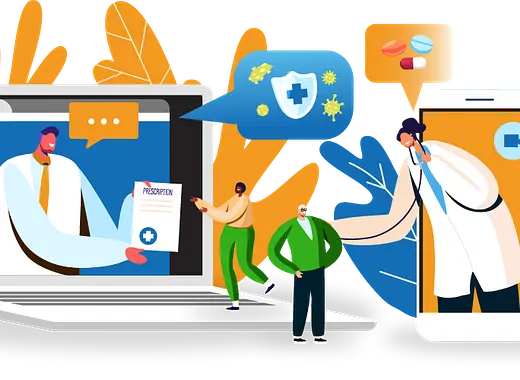BLOG
The care continuum is changing to catch up to the demands and needs of patients, but what does it all mean? Is your practice set up to deliver care virtually? Do you schedule telehealth appointments with your patients? Are digital health tools part of how you provide care?
We can all agree that virtual care, telehealth or telemedicine, and digital health are terms used to describe the delivery of healthcare services through electronic and digital communication technologies. And while they sound similar, they mean different things. Technically, it becomes important to distinguish them from one another, especially for the purposes of billing codes.
Virtual Care
Virtual care is a broad term that encompasses a wide range of healthcare services delivered through digital channels. Virtual care includes not only telehealth services but also other forms of digital healthcare, such as online appointments, remote patient monitoring, and virtual visits with doctors or other healthcare providers.
Virtual Healthcare Can Be Delivered Synchronously or Asynchronously
Virtual health encompasses all things in Telehealth and Digital Health. It can also be delivered synchronously, in real time, or asynchronously, where there is a delay between when a patient seeks care and when a healthcare provider responds. With the delay, information is typically collected and shared within an app, patient portal, or secure messaging platform. The information is then transmitted between the healthcare provider and the patient for review later. This type of care is most helpful for non-emergency questions or health events.
Telemedicine or Telehealth
Telehealth generally refers to the use of technology to provide remote clinical health care services, including medical consultations, diagnosis, and treatment, using electronic communication tools like videoconferencing, phone calls, or secure messaging. Telehealth is often used to connect patients with healthcare providers who are not in the same physical location, such as rural or remote areas where access to healthcare services may be limited. It is often interchangeable with Telemedicine.
The Elements of a Telehealth Appointment
The CDC reported that in 2021, 37% of adults had used Telehealth within a twelve-month period. Physicians are also more widely adopting the practice and feel it is here to stay. Here are some common elements of a Telehealth visit.
- Both provider and patient expect to communicate from separate locations using telephones, mobile phones, personal computers, or devices like a tablet with video conferencing capabilities.
- Services can include routine checkups, consultations, and follow-up visits.
- Appointments are typically conducted in real-time, with a healthcare provider interacting with a patient in a virtual setting.
- Prescriptions can be written using ePrescribing software like DoseSpot to transmit selected therapies directly to the patient’s pharmacy of choice to get filled.
* The DEA is currently proposing new telehealth rules regarding ePrescribing controlled substances during a telehealth appointment. As COVID-19 health emergency orders expire on May 11, 2023, new policies will be in place.
Digital Health
Digital health refers to the use of digital technologies, such as mobile apps, wearables, ePrescribing capabilities, and electronic health records, to improve health outcomes and patient care. Digital health technologies can also be used to monitor patients remotely, provide health education, track health data, and enhance communication between patients and healthcare providers.
Real-Life Examples of Digital Healthcare
The options and breadth of services for digital healthcare continue to expand rapidly. According to a 2022 article published by Fierce Healthcare, while looking back to 2021 results, digital health startups raised over $29.1 billion dollars. The behavioral healthcare, musculoskeletal, and diabetic markets are proving to be the biggest innovators.
Here are some additional examples of technology making a difference:
- Remote Patient Monitoring: This technology allows healthcare providers to monitor patients’ health remotely using different devices and sensors, such as wearables and smart devices. The data collected can help healthcare providers identify potential health problems before they become more serious, allowing for early intervention.
- Digital Therapeutics: Technology used to deliver therapeutic interventions, such as cognitive behavioral therapy or medication management. Digital therapeutics can be accessed via mobile apps, web-based programs, or other electronic platforms.
- ePrescriptions: Medications can be prescribed and sent directly to the patient’s pharmacy of choice, eliminating the need for paper prescriptions.
- Electronic Health Records: This is a digital version of a patient’s medical record, which can be accessed by authorized healthcare providers from anywhere in the world. EHRs can improve the efficiency and accuracy of healthcare delivery while ensuring patient privacy and security.
It’s amazing what a strong internet connection can do to improve your health. As technology continues to advance, we can expect to see even more innovative digital healthcare solutions in the future.

